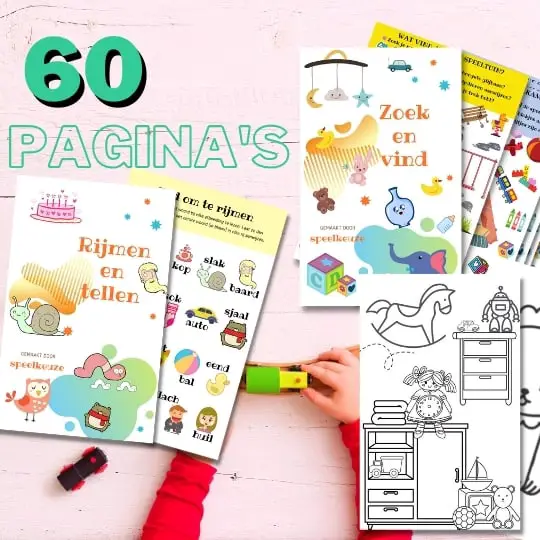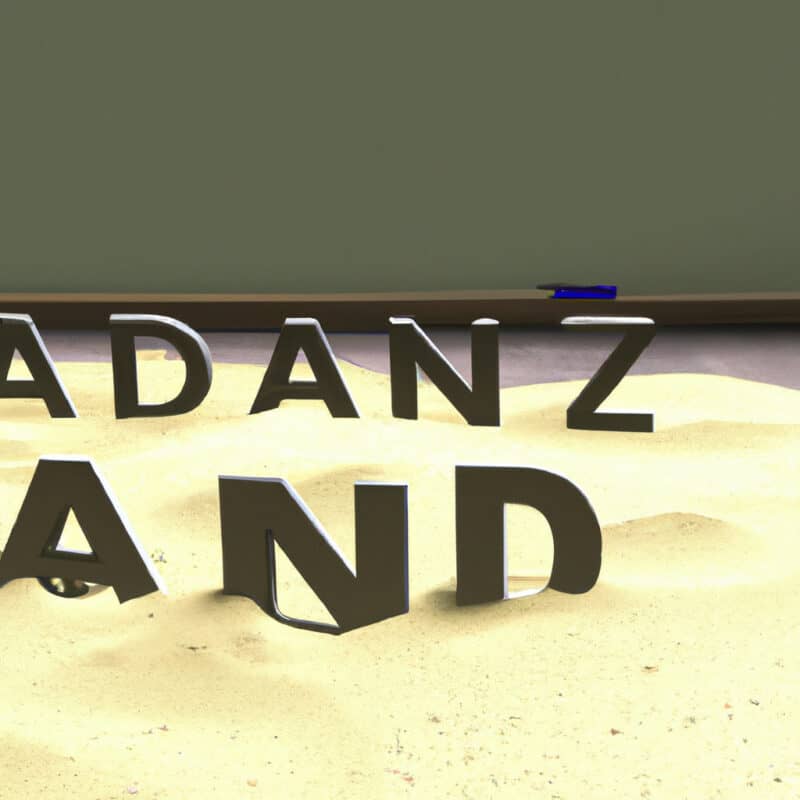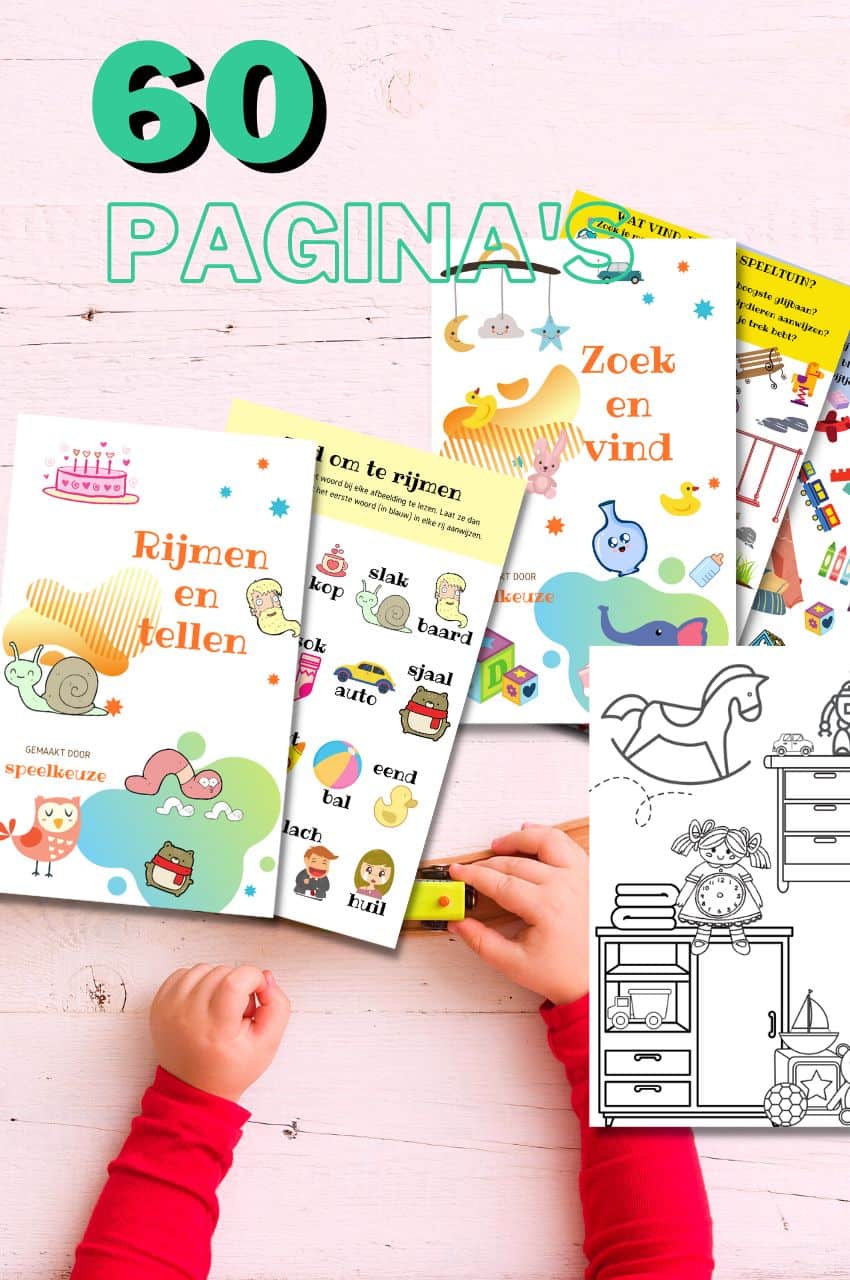Sand: Why is it good for children and for what learning purposes?

Always something to do for the holidays or rainy day?
Play Choice now has the ultimate activity book collection, with over 60 pages of fun coloring pages and educational puzzles.
Sand is a universal material used by children for a variety of purposes.
It's a great material for it sensorimotor development, spatial insight, social-emotional play, creativity and problem-solving thinking.
Sand can increase and enrich children's knowledge and skills. But what exactly is sand and how can you embrace it in your classroom or home?
Let's take a look at what sand is and why it's so good for kids.


From toddler to toddler activity book collection
Educational games and coloring pages for 3 to 6 years
Your toddler and preschooler will love this e-book, along with the accompanying printables. He or she can play with it at every stage of development, together with mom and dad.
Buy at Bol.comWhat we discuss in this comprehensive post:
Why is sand good for children?
Sand toys are a great way to help children learn, both emotionally and socially.
Playing with sand toys increases creativity and helps children develop other skills they need to ultimately learn better.
From the time a child receives a small sand toy, until they grow older, sand has several benefits for children.
Let's take a closer look at the specific benefits of sand as a learning material for children.
How does sand help children develop their motor skills?
Sand plays an important role in helping children develop motor skills.
Movement is essential for children, and playing with sand can help them strengthen their hand-eye coordination, fine motor skills and self-regulation.
Playing with sand also teaches children how to solve problems, work together in groups and express their creative thoughts.
There is also evidence that sand helps children build confidence when they take risks building some structures that may fail.
Sand teaches them to tolerate setbacks.
Sensorimotor learning is essential for children's mental, physical and emotional health.
Why is sand a great play material?
Playing with sand is a very stimulating and educational experience for children. As with any activity for kids, it has many benefits.
Playing with sand helps children develop their motor skills. It is a great play material to help their ability to understand certain relationships such as size, color and volumes.
They develop their imagination through the ability to build and create, by imitating what they see in their own world, or creating what is new to them.
It is also thought that children who play a lot with sand also do better social skills acquired through interaction with other peers.
In addition, parents can also use game ideas with this material to teach children more about science, technology and math concepts.
What are the properties of sand?
Sand is a good and versatile learning tool for children. It is soft, easy to move and has no great risk of injury.
Sand has many benefits, including creative play, hand-eye coordination, sense of structure and coherence, and development of problem-solving thinking.
Sand is functional because of the different ways children can play with it. For example, children can build with molding bars, or simply have fun building sculptures like shortbread or sand castles.
In addition to the lively sand play, some normal ground rules can also be taught, such as the different types of movement required to perform certain tasks such as digging.
What types of sand are there?
There are different types of sand available today. All types have their own characteristics and benefits, so if you're looking for the perfect smoothness to mess around with, there's always an option.
The following are some commonly used strains with some of their common properties:
River sand: This is what you normally find in river lakes in nature. It is darker in color, dries quickly and absorbs little water, making it excellent for building sandcastles.
Playbox sand or children's sand: This soft, fine white-grained product is also called diamond sand because it is so shiny when dry. Children love to cut out shapes with it.
Large-grain beach sand: This variant is often coarser than river or children's play sand. It consists of wider grains that are perfect for playing with shovels and dump trucks.
Kinetic sand: This is special sand that sticks together better and has the properties of wet sand without being wet. It is easier to use indoors than the other types of sand.
Is kinetic sand better to play with than regular sand?
Kinetic sand provides a clean, moldable and reusable play experience without the mess, ideal for detailed sculptures. Plain sand, sourced from nature, provides an authentic play experience with opportunities for outdoor fun and real sand construction, but can be a bit more messy.
The choice between the two depends on personal preference and the desired playing environment: playing with kinetic sand provides a neater and moldable indoor experience, plain sand for the authenticity of outdoor games and natural constructions. Both have their own charm.
Which learning objectives can be achieved with sand?
Sand is a good tool to help children develop basic skills such as measuring, organizing, comparing and classifying, and even motor skills such as swiping, grabbing and spilling.
With the help of sand, children can also learn about problem solving, working together and exploring the world around them. Let's take a look at which learning goals can be achieved with sand.
How can children develop their language skills with sand?
Sand is a great medium to help children improve their language skills.
Through play and interaction with others, sand can help children strengthen their vocabulary, grammar, expressive and receptive reading and listening skills.
The use of sand allows children to put simple and complex words into conversations that can be added to their appropriate general vocabulary for reading, writing and speaking.
These conversations stimulate word order in children such as telling stories with informative language.
Also, cognitive thinking is stimulated between sand partners through discussion, problem solving or initiatives to build composite structures such as towers.
Sand in the classroom
Sand is a great tool that teachers can use in the classroom to help their students improve their skills.
Through playing with sand, children can learn skills such as motor skills practice, problem solving, teamwork and creativity.
In addition, sand is a great educational material as it helps children understand math, science and technology concepts.
Let's look at the different ways sand can be used in the classroom.
How can you use sand in the classroom?
Sand offers a lexicon of unlimited possibilities! With simple materials such as clay, but also with complicated techniques such as 3D printing, sand can be used to innovate in the classroom.
It is fun and inviting to play and learn with. Here are some ways sand can be used in the classroom:
-Perceptual Mirror – Sand has different textures, hard bits and more. Have children use their fingertips to experience the variations. This helps them become more aware of their physical environment.
-Fine motor skills - By making towers of sand, races or other constructions you help children strengthen their fine motor skills. This goes hand in hand with learning about order, organization and problem solving.
-Art project – There is also nothing wrong with art! Buy images or patterns that can serve as inspiration for creating unique 3D artwork from sand.
Safety
Whether you're a parent looking for a way to boost your child's development or a teacher looking for a fun way to achieve learning goals, sand play is a great option.
Sand teaches children to improve their fine motor skills, but it also offers many other benefits, including safety.
Let's take a look at the different ways sand can provide safety.
What are some tips for cleaning sand?
Sand cleaning is simple but important, as keeping the environment your children play in clean is important for their health.
Here are some common sand cleaning tips and best practices:
- After playing, have children remove footprints and other debris from the sand before cleaning up.
- Check daily whether there are unwanted objects such as sharp sticks or plastic pieces in the play environment before children start playing again. Remove those items to avoid any hazards.
- Provide good drainage if water regularly comes near the playing surface, such as a drain pipe or well. Poor drainage can lead to long-term fouling and the growth of undesirable plant material or mosses in the surface that are more difficult to remove than normal sand contamination.
- Apply bacteria control as needed to control parasitic worms, zoonotic diseases, or other potentially high-risk microbes that may be present.

Always something to do for the holidays or rainy day?
Play Choice now has the ultimate activity book collection, with over 60 pages of fun coloring pages and educational puzzles.
Joost Nusselder, the founder of Speelkeuze.nl is a content marketer, father and loves trying out new toys. As a child he came into contact with everything related to games when his mother started the Tinnen Soldaat in Ede. Now he and his team create helpful blog articles to help loyal readers with fun play ideas.
